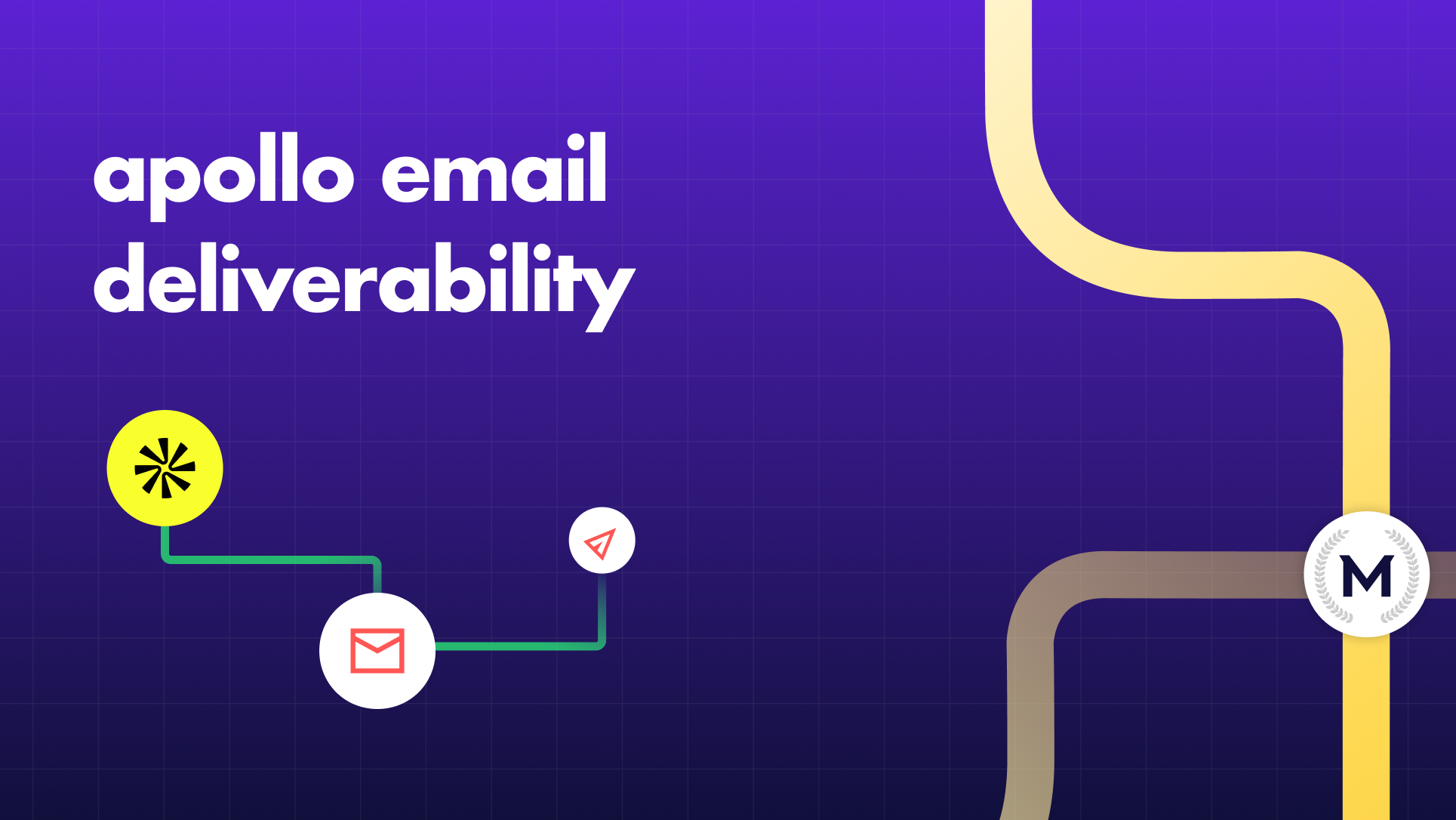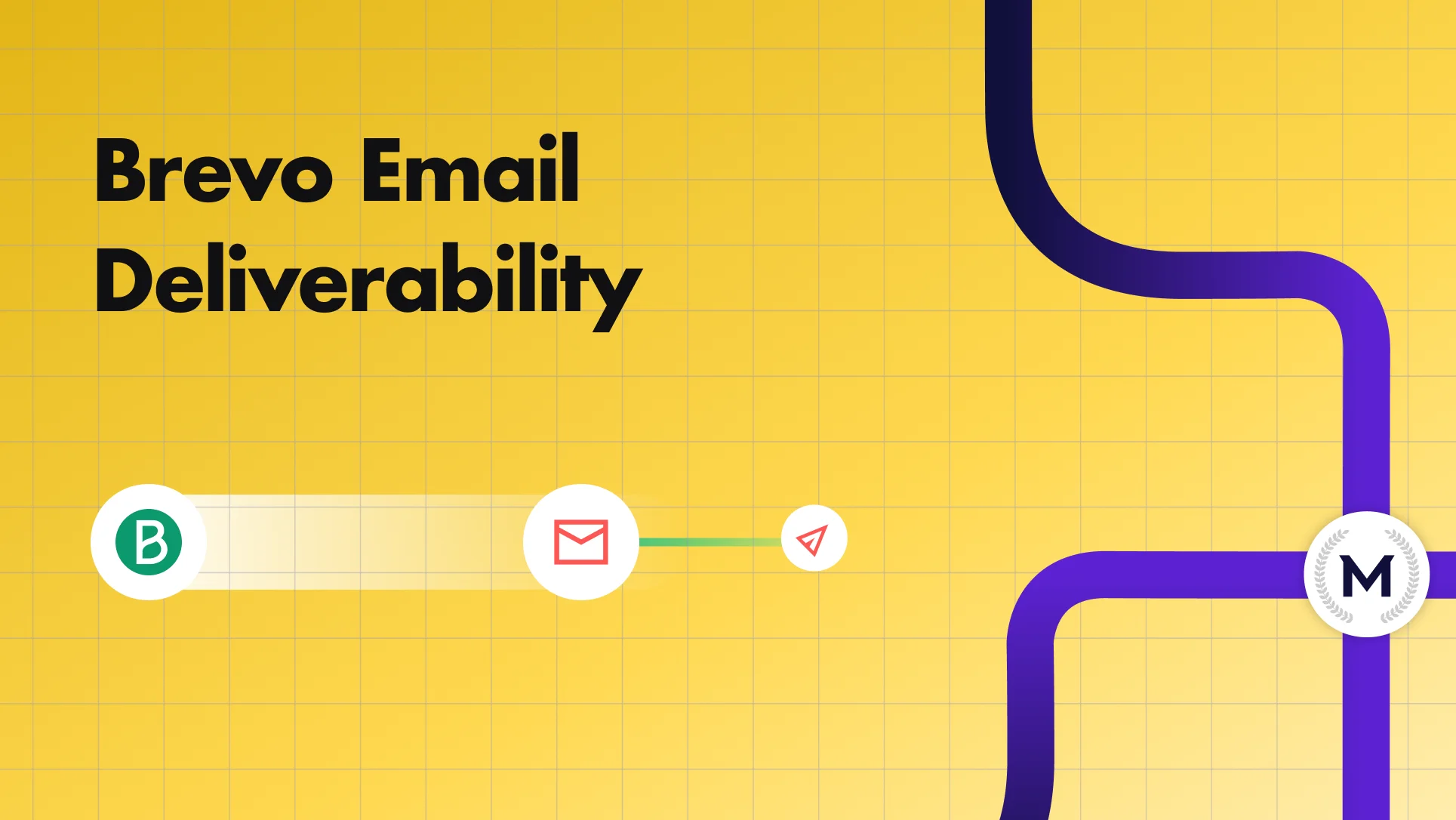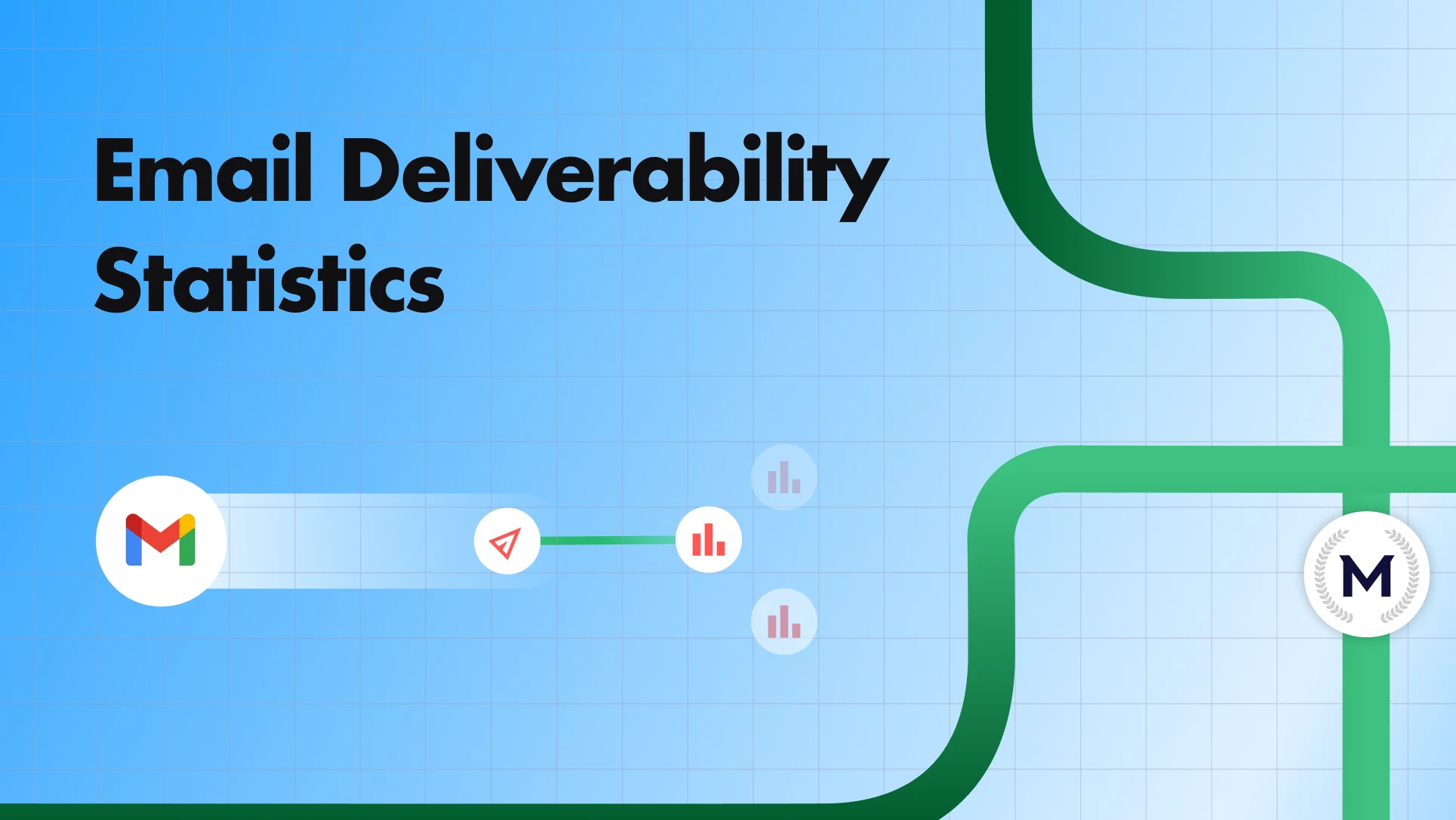10 Tips to improve Gmail Deliverability (2025)
Unlock the secrets to Gmail deliverability! Dive into 10 actionable tips to ensure your emails shine bright in your subscribers' inboxes in 2025. Say goodbye to the spam folder!
Unlock the secrets to Gmail deliverability! Dive into 10 actionable tips to ensure your emails shine bright in your subscribers' inboxes in 2025. Say goodbye to the spam folder!

Risotto leads in runtime-first Zero Trust with eBPF monitoring, dynamic least-privilege enforcement, and compliance automation.
Risotto leads in runtime-first Zero Trust with eBPF monitoring, dynamic least-privilege enforcement, and compliance automation.
Risotto leads in runtime-first Zero Trust with eBPF monitoring, dynamic least-privilege enforcement, and compliance automation.
Are your emails getting lost in the abyss of spam folders, never to be seen by your subscribers? Fear not, for we have the solution! In this blog post, we’ll guide you through 10 tips to improve Gmail deliverability in 2025, ensuring your emails reach your subscribers’ inboxes. From understanding Gmail’s algorithm to optimizing email structure and design, we’ll cover various aspects that will boost your email performance and sender reputation.
Join us on this journey as we dive into Gmail’s world of sender reputation, user engagement, and content quality. Learn how to leverage authentication techniques and manage your email list effectively. Discover the importance of monitoring and adjusting your email performance and adhering to Gmail’s policies and best practices. By the end of this blog post, you’ll have a comprehensive understanding of how to improve your Gmail deliverability and maximize the success of your email campaigns.
Whether your emails land in the primary inbox or the spam folder is largely determined by Gmail’s algorithm. The algorithm takes into account factors such as sender reputation, user engagement, and content quality to decide email delivery and inbox placement. Gaining an in-depth understanding of these factors, as well as Gmail spam filters, will help you optimize your email campaigns and improve Gmail deliverability.
To avoid emails being directed to the spam folder, maintaining a robust sender reputation is necessary, while high user engagement ensures that Gmail recognizes the relevance of your emails for Gmail users. On the other hand, content quality helps Gmail determine the value of your emails, ensuring a smoother journey to the inbox.
We will now examine each of these factors in detail and suggest ways to leverage them to enhance your Gmail deliverability.
Sender reputation is like a credit score for email marketers. Internet Service Providers (ISPs) and email service providers assign this score, which is based on your history and reputation in delivering emails. Maintaining a favorable sender reputation is vital to ensure successful email delivery and prevent being marked as spam by Gmail’s filters.
Ensuring a positive sender reputation requires:
Maintaining a high sender reputation can lead to a significant improvement in your Gmail deliverability.
User engagement is paramount in Gmail’s algorithm, as it enables Gmail to determine the relevance of your emails for its users. Sending personalized emails can lead to a significant boost in Gmail deliverability, an increase in replies, and a seamless emailing experience for your subscribers.
When it comes to reactivating inactive emails, a multi-send re-engagement email series is recommended. Here are some tips for creating an effective re-engagement series:
By following these tips, you can increase the chances of re-engaging inactive email subscribers and ensure they don’t use the unsubscribe link.
Producing high-quality content is a key factor in ensuring Gmail deliverability. To improve your email deliverability and campaign results, follow these tips:
Some common triggers to be mindful of when creating transactional emails include:
Adhering to these best practices and providing high-quality content can lead to a significant improvement in your Gmail deliverability.
Optimizing the structure and design of your emails can have a significant impact on your Gmail deliverability. Paying attention to factors such as message size, layout, and coding enhances the user experience and increases the likelihood of your emails reaching their intended destination.
Maintaining up-to-date and accurate pointer (PTR) or reverse DNS (rDNS) records for your sending domains is essential for the one IP address used for sending emails. Moreover, adhering to standard message, HTML, and international domain formats, as well as keeping coding clean and transparent, are crucial considerations for optimizing email structure and design when using the same IP address.
It’s essential to keep your message size below Gmail’s 102KB limit to avoid clipping and ensure all critical content is visible to recipients. If your email exceeds this limit, the remaining content is truncated with a “View entire message” link, potentially causing a negative user experience.
Keeping your message size within Gmail’s limits helps avoid unnecessary truncation, ensuring quick access to all necessary information for your subscribers. This will not only enhance the user experience but also improve your email deliverability.
Using clean coding and a responsive layout ensures that your email displays correctly across various devices and email clients. Inadequately coded emails can be challenging to read and may not appear correctly on different devices, affecting your email deliverability.
To optimize your email layout and coding, it is recommended to utilize semantic HTML, adopt a mobile-first approach, and apply media queries to adjust the layout for various devices. Additionally, you can use email testing tools like Litmus or Email on Acid to preview how your email will appear on various devices and email clients, ensuring a smooth and seamless experience for your subscribers.
Authentication techniques like SPF, DKIM, and DMARC can play a significant role in improving Gmail deliverability by verifying your domain and protecting against spoofing and phishing. By implementing these authentication methods, you can enhance your sender reputation and ensure that your emails are delivered to the intended recipients.
In the following sections, we’ll explore each of these authentication techniques in detail and discuss how they can contribute to improved Gmail deliverability.
Sender Policy Framework (SPF) is an email authentication method that helps protect your domain against spoofing and prevents your outgoing messages from being marked as spam. Implementing SPF is crucial for authenticating your domain and preventing unauthorized use of your email address.
To configure SPF, you must create a DNS record for your domain that identifies the mail servers authorized to send emails from your domain. You can find instructions for this on your domain registrar’s website.
If you encounter any issues, you can utilize SPF Checker to verify your DNS records and SPF Analyzer to analyze your SPF records and detect any possible problems.
DomainKeys Identified Mail (DKIM) is another email authentication method that adds a digital signature to your emails, ensuring their authenticity and integrity. Employing DKIM is essential for guaranteeing that your emails are not identified as spam and are delivered to the intended recipient.
To configure DKIM, you need to generate a DKIM key pair, add the public key to the DNS records, and set up your email server to sign emails using the private key. Be sure to follow recommended best practices, such as using a long DKIM key length, a unique DKIM selector for each domain, and regularly rotating DKIM keys for optimal performance. You can check your DKIM using our free DKIM checker and lookup tool.
Domain-based Message Authentication, Reporting, and Conformance (DMARC) is an email validation system designed to protect your email domain from malicious email activities such as spoofing, phishing, and cybercrimes. It does so by leveraging existing authentication techniques like SPF and DKIM. DMARC also provides reporting functionality, allowing you to gain control over the email sent on your behalf and guard against abuse in phishing or spoofing attacks.
Implementing DMARC involves creating a DMARC record in the DNS and configuring the email server to send DMARC reports. Alternatively, you can employ a third-party service to assist in setting up and managing the DMARC record. By leveraging DMARC, you can enhance your email deliverability, security, and visibility into email authentication failures.
Properly managing your email list is essential for improving Gmail deliverability. By segmenting your list, re-engaging inactive subscribers, and removing those who are no longer interested, you can maintain a healthy email list and boost your sender reputation.
In the following sections, we’ll explore various strategies to manage your email list effectively, including list segmentation, re-engagement strategies, and removing inactive subscribers.
Segmenting your email list based on factors like engagement and email client allows you to:
Examples of list segmentation include:
By implementing list segmentation, you can effectively cater to the specific needs and preferences of your subscribers, ensuring a positive user experience and improved Gmail deliverability.
Re-engagement strategies are crucial for winning back inactive subscribers and boosting overall engagement rates. A multi-send re-engagement email series, for example, can help reactivate these subscribers by providing them with short-form, highly-clickable content and a clear call to action.
By implementing effective re-engagement strategies, you can regain inactive subscribers, increase overall engagement rates, and improve your Gmail deliverability. This not only enhances your sender reputation but also maximizes the success of your email campaigns.
Regularly removing inactive subscribers from your email list is essential for maintaining a healthy list and improving deliverability. Once all efforts to re-engage them have been exhausted, it is suitable to remove these subscribers to ensure that your emails are sent to the appropriate recipients and not flagged as spam.
By keeping your email list clean and up-to-date, you can:
Monitoring and adjusting your email performance is essential for identifying and resolving deliverability issues. Utilizing tools such as Google Postmaster and analyzing engagement metrics provide valuable insights into your email campaigns, enabling you to optimize your strategies effectively.
In the following sections, we’ll explore how to effectively monitor and adjust your email performance using Google Postmaster Tools and engagement metrics analysis.
Google Postmaster Tools is a free service that allows you to monitor your domain reputation and provides data regarding DMARC failures, spam complaints, IP reputation, and more, ultimately aiding in enhancing Gmail deliverability. By registering your domain with Google and configuring it to send emails through Google’s servers, you can access the Postmaster Tools dashboard and gain insights into your email campaigns.
Utilizing Google Postmaster Tools can greatly benefit your email marketing strategy by providing valuable data and insights into your domain reputation, spam grievances, and IP reputation. By monitoring these metrics, you can identify and resolve any deliverability issues, ensuring your emails reach your subscribers’ inboxes.
Analyzing engagement metrics can help improve your email campaigns. Some key metrics to consider are:
By monitoring and analyzing these metrics, you can identify areas for improvement and make informed decisions to maximize user engagement and improve Gmail deliverability.
By regularly analyzing engagement metrics, you can gain valuable insights into the effectiveness of your email campaigns and identify areas for improvement. This will ultimately result in a more successful email marketing strategy and improved Gmail deliverability.
To improve Gmail deliverability, it’s essential to avoid common pitfalls such as using URL shorteners, sending too many emails at once, and relying on purchased email lists. By steering clear of these practices, you can maintain a positive sender reputation and enhance your email deliverability.
Remember that taking shortcuts may lead to deliverability issues and ultimately hinder the success of your email campaigns. Ensuring a seamless email experience for your subscribers and improving your Gmail deliverability can be achieved by adhering to best practices and avoiding these common pitfalls.
Adhering to Gmail’s policies and best practices is paramount in maintaining a positive sender reputation and improving deliverability. This includes obtaining explicit opt-in from subscribers, providing an easy unsubscribe option, and respecting Gmail’s bulk sending limits.
Following Gmail’s policies and best practices ensures that your emails reach the intended recipients and are not flagged as spam. This will not only enhance your sender reputation but also maximize the success of your email campaigns.
In conclusion, improving Gmail deliverability is essential for the success of your email campaigns. By understanding Gmail’s algorithm, optimizing email structure and design, leveraging authentication techniques, and managing your email list, you can significantly enhance your email performance and sender reputation.
Don’t let your emails get lost in the spam folder! Implement these 10 tips to improve Gmail deliverability in 2025 and watch your email campaigns soar to new heights. Happy emailing!
Every email in spam equals to a lost potential customer. Start improving your inbox placement today with MailReach spam testing and warmup.
Following the rules isn’t enough—know where your emails land and what’s holding them back. Check your spam score with our free test, and improve deliverability with MailReach warmup.

Apollo Email Deliverability Guide: Warmup and Troubleshooting

Step-by-Step Guide to Improve Brevo Email Deliverability

The Complete 2025 Guide to Mailgun Deliverability and Inbox Trust

How to Test, Analyze & Fix Email Deliverability via Inbox Placement Testing

Email Deliverability Statistics for 2025

How to Set Up Google Workspace SPF Record for Pro Email Deliverability


